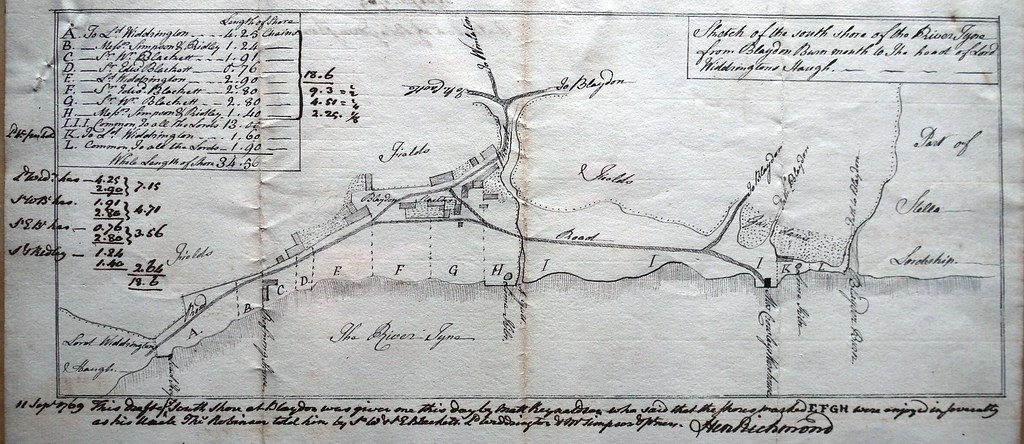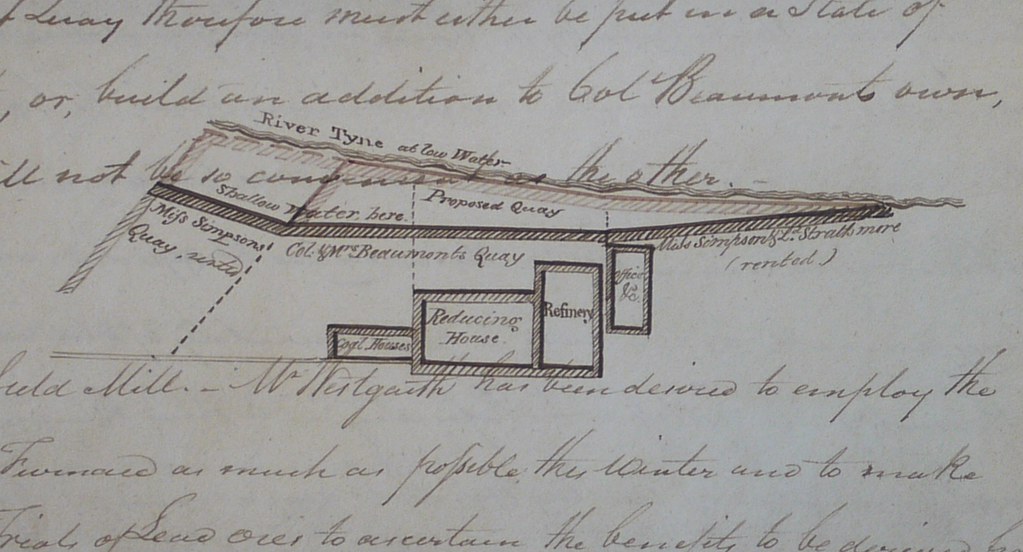Long before the Blaydon Races, long before Cowen’s brickworks on the Blaydon Burn or the visit of the celebrated Italian revolutionary Garibaldi to Stella Hall, Blaydon played a vital role in the regional lead industry.
![]() Blaydon lies on one of the most westerly navigable reaches of the River Tyne. It was therefore an obvious place at which bars or pieces of smelted lead could be trans-shipped from pony trains to keels and wherries and taken down the river to Newcastle and to the waiting tall-masted ships below the bridge. The Heritage Lottery funded Dukesfield Smelters and Carriers project, run by the Friends of the North Pennines charity between 2012 and 2015, has been researching the industry and the role played by Blaydon.
Blaydon lies on one of the most westerly navigable reaches of the River Tyne. It was therefore an obvious place at which bars or pieces of smelted lead could be trans-shipped from pony trains to keels and wherries and taken down the river to Newcastle and to the waiting tall-masted ships below the bridge. The Heritage Lottery funded Dukesfield Smelters and Carriers project, run by the Friends of the North Pennines charity between 2012 and 2015, has been researching the industry and the role played by Blaydon.
Between the 1600s and 1800s a network of carriers routes fanned out to the west and south from this small riverside village to the lead smelting mills in Northumberland and Durham, and beyond them to the lead mines of the high North Pennines – in Allendale, Weardale, Alston Moor and Teesdale. The muddy banks of the river as it sweeps around at Blaydon were shored up with wooden piles to build quays or staithes, strong enough to hold piles of lead bars and secure enough for keels to be moored to take on their cargo. From at least the 1720s a refinery was in operation at Blaydon, converting lead into silver and litharge – used in the paint and glass industries. Thousands of horses each year carried lead over the hills down to the river here, many coming from the large smelting mill at Dukesfield in Hexhamshire. Horse Croft, a small lane not far from the A695 roundabout, is a small reminder of what would once been a huge presence of ponies and horses in the neighbourhood. With the arrival of the railway, lead transport became around 40% cheaper than by pony train. The first section of the Newcastle to Carlisle Railway to be opened was between Hexham and Blaydon in 1835, and it follows its present course so that it could bring lead right to the refinery on the riverbank.
There is much more on the history of the lead industry, the network of routes converging on Blaydon, and the Dukesfield Smelting Mill elsewhere on this website so do take a look around. The button to the top left takes you to the site’s main page, or browse the options shown to the left. The project has created a self-guided cycle route from Blaydon following the old lead carriers routes, and there is also a leaflet describing a fascinating 3 mile self-guided walk from Blaydon station. These, and two other walks leaflets can be downloaded from here.
Contact the Winlaton and District Local History Society for more information about its activities and interests in the Blaydon area.



